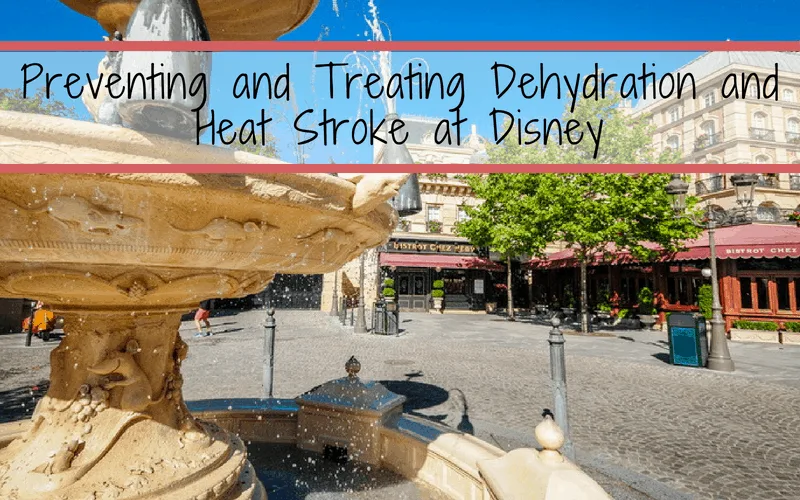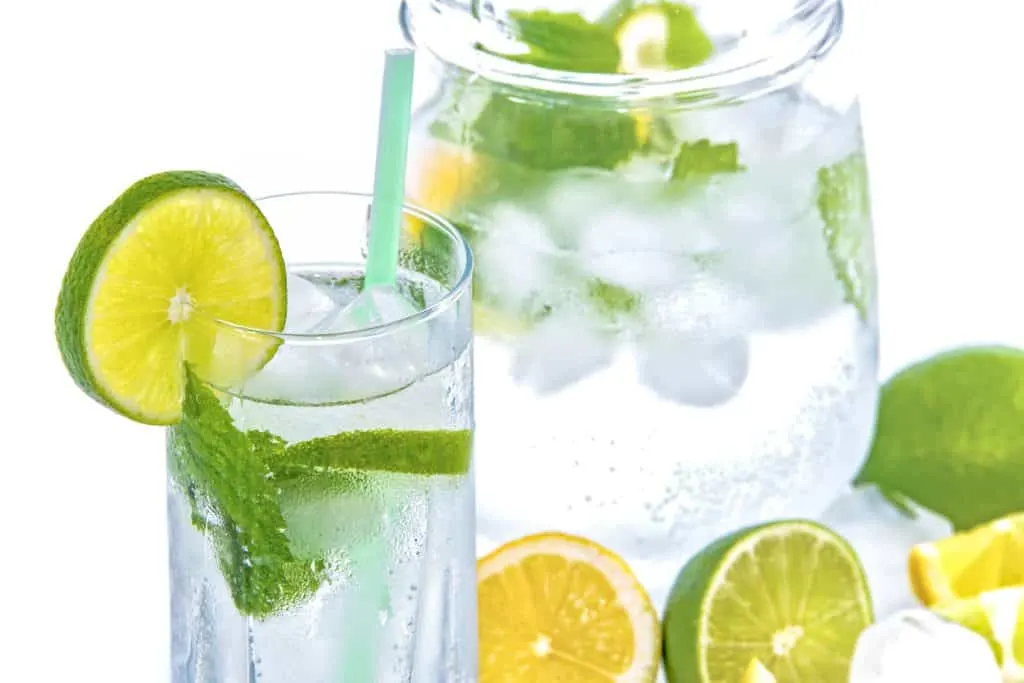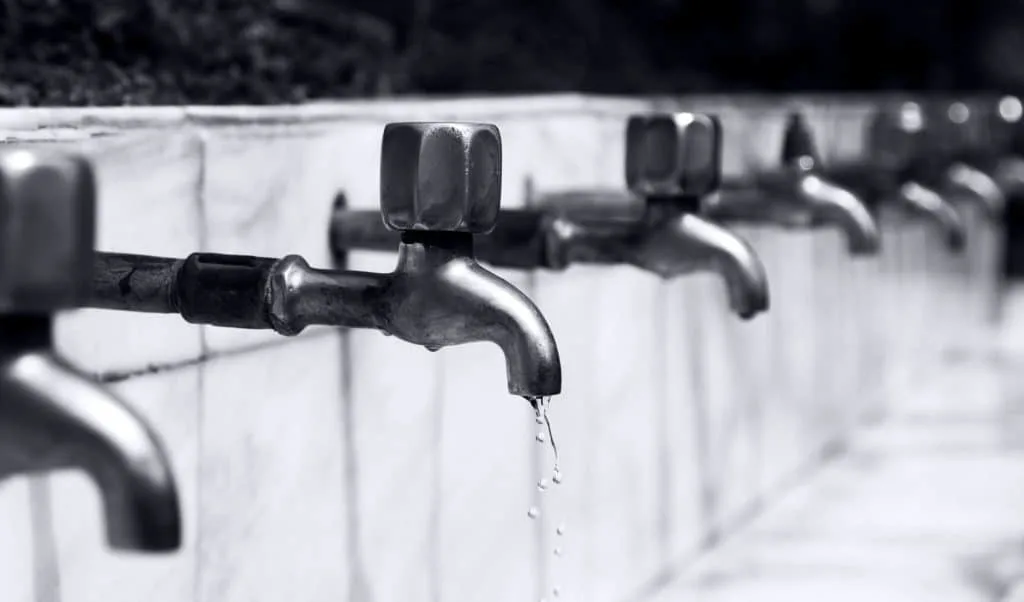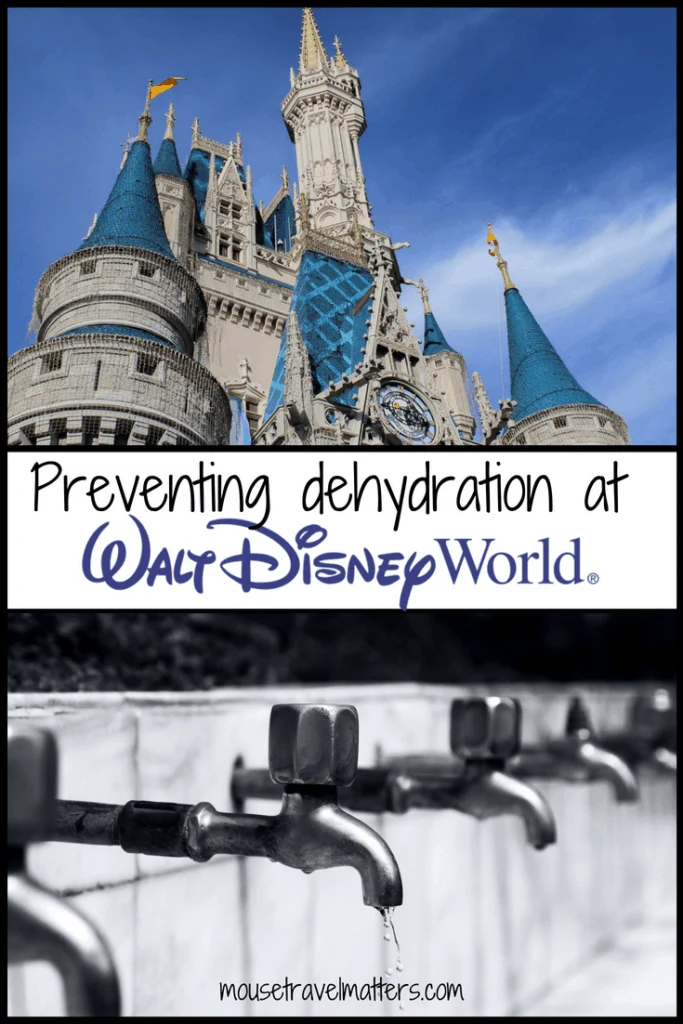
Discuss this topic with your doctor before your big holiday!
See some points of discussion in this article.
Dehydration and Heat Stroke on Your Disney Holiday could ruin the magic.
The hot summers in Orlando, Florida can be sweaty. Coupled with the distractions of the Best Walt Disney Worlds Rides to get Your Blood Pumping, one soon can lose track of their hydration needs. The signs and symptoms of dehydration are often hard to spot until it is too late.
At home, away from the extremes of the great outdoors, and the week-long treks that destroy our shoes and sometimes our even suntan, preventing and treating dehydration is generally less of a concern. Our activity levels are moderated by our access to creature comforts and work or school schedules.
Taking the clan to Disney can leave even the most prepared of Disney fans astonished at the energy-sucking nature of the great outdoors. That said, Mouse Travel Matters presents a discussion of the signs, symptoms and prevention strategies that will prepare you for your Walt Disney World adventure. We will also fill you in on the quickest ways to seek treatment if the signs of dehydration and heat stroke present themselves during your trip.
Prevent Dehydration
What signs of dehydration should we watch for?
Early signs of dehydration include fatigue, thirst, dry lips and tongue, lack of energy, and feeling overheated. But if kids wait to drink until they feel thirsty, they’re already dehydrated. Thirst doesn’t really kick in until a child has lost 2% of his or her body weight as sweat.
The claim is that we should be drinking water routinely to the point that we never feel thirsty, and that to not be doing so is to our detriment. Thirst sets in at about 2%, so you’ll always feel strong thirst setting in long before you’re dehydrated.
While we understand that from a medical point of view at the onset of thirst we are “mildly dehydrated” (thirst wouldn’t make much sense if nothing was going on), the claim is that the sensation is indicative of an already-made mistake in behaviour, and that drinking water now will be of significantly less benefit than if we had beforehand, preempting thirst. It takes about TWO HOURS for anything you drink to have an effect on your body’s hydration level.
What puts us at risk for dehydration?
There are a handful of risks for dehydration, both for yourself and your children; prolonged exposure to high temperatures, direct sun, and high humidity, without sufficient rest and fluids. Medically, dehydration is defined as a 5% increase in the concentration of solutes in your blood. (Often this can be more conveniently detected based on short-term weight loss.)
The difference is that a child’s body surface area makes up a much greater proportion of his overall weight than an adult’s, which means children face a much greater risk of dehydration and heat-related illness.
What can I do to prevent dehydration?
Make sure everyone drinks cool water early and often.
Get everyone acclimatized before summer vacation. If you are going to spend 10-15 days walking around the hot Florida sun while at Walt Disney World, the family shouldn’t be spending the weeks beforehand sitting on the couch. Especially the children, everyone should be outdoors jogging, riding a bike, and otherwise slowly building up their fitness and ability to handle the heat.
Know that dehydration is cumulative. If you do not get enough to drink by the end of the day, tomorrow morning doesn’t “restart the clock”. Your bodies are now fighting an uphill battle to replenish yesterdays fluid loss while dealing with today’s heat and exercise.
Symptoms of Heat Stroke
According to WebMD, Heat stroke results from prolonged exposure to high temperatures – usually in combination with dehydration. Heat stroke may be fatal to the brain and other internal organs. Although heat stroke mainly affects people over age 50, it also takes a toll on healthy young athletes.
Heat stroke often occurs as a progression from milder heat-related illnesses such as heat cramps, heat syncope (fainting), and heat exhaustion. But it can strike even if you have no previous signs of heat injury.

The hallmark symptom of heat stroke is a core body temperature above 104 degrees Fahrenheit. But fainting may be the first sign.
Other symptoms may include:
- A throbbing headache
- Dizziness and light-headedness
- Lack of sweating despite the heat
- Red, hot, and dry skin
- Muscle weakness or cramps
- Nausea and vomiting
- Rapid heartbeat, which may be either strong or weak
- Rapid, shallow breathing
- Behavioural changes such as confusion, disorientation, or staggering
- Seizures
- Unconsciousness
Best Drinks for Dehydration Prevention
- Water
- Fruit-infused water. Try adding lime and basil, lemon with raspberry, or cucumber with mint
- Fruit juice
- Watermelon
- Sports drinks (in moderation)
- Milk alternatives like soy, coconut, and almond
- Coconut water
- Milk
The quickest route to dangerous dehydration can occur when consuming excessive amounts of coffee, soft drinks, and alcohol. Alcohol in particular can, if consumed in excess, prevent the body from being able to absorb water in support of hydration. Moderate consumption is certainly a good idea and a great way to beat the heat. Any caffeinated drink can contribute to dehydration, so as before, moderation is key and water is your best option.
How to Treat Heat Stroke
According to the Mayo Clinic, there are a few treatments you can do yourself in the Parks to treat heat stroke
- Get to a shady or air-conditioned place.
- Cool off with damp sheets and a fan. Cool the injured person by covering him or her with damp sheets or by spraying with cool water. Direct air onto the person with a fan.
- Pack yourself with ice and cooling blankets. Another method is to wrap you in a special cooling blanket and apply ice packs to your groin, neck, back, and armpits to lower your temperature.
- Immerse yourself in cold water. A bath of cold or ice water has been proved to be the most effective way of quickly lowering your core body temperature
- Use evaporation cooling techniques if immersion isn’t available. Cool water is misted on your body while warm air is fanned over you, causing the water to evaporate and cool your skin.
- If you’re outdoors and not near a shelter, soaking in a cool pond or stream can help bring your temperature down. Placing your feet in a fountain or splash pad can do the trick, as long as the resting spot is in the shade.
- Rehydrate.
- Don’t drink sugary or alcoholic beverages to rehydrate
- Don’t cool to the point of shivering. Shivering increases your body temperature, making treatment less effective.

What to do in the Case of Heat Stroke at Disney
Rightly Disney has robust first aid services at every Walt Disney Theme park and at there resorts around the world.
If you begin to feel ill or find that you require medical assistance, please visit one of our conveniently located First Aid centers. Nurses are available during normal park operating hours to offer over-the-counter medications, bandages and other quick remedies so that you can begin enjoying your vacation again.
Make sure you know where the station is within each park you are visiting as to alleviate confusion later.
Baby Care Centres are also able to help guests with mild dehydration. Their centres are Air Conditioned and have access to cold water, with over the counter medications and juices available for purchase. This is also a great place to relax for a few minutes while the children cool down, away from the hustle and bustle of the shops and indoor queues.
Disney Cast Members are also able to provide the required information to seek advanced medical attention at a nearby hospital. This is when proper travel insurance comes into play. Past guests have mentioned how accommodating Disney is when it comes to transporting guests to and from the hospital.
So, Disney fans are warned – spending the day at one of the top Theme parks in the USA in the scorching hot sun can easily cause dehydration, especially if you are spending hours waiting in line or walking around a large, unshaded park. Also, children are more vulnerable to heat stroke than adults, so parents should keep an eye on their little ones while enjoying a day of Disney Touring. Walt Disney World can reach sweltering temperatures of over 38°C (100°F ) in the summer.
Discuss this topic with your doctor before your big holiday!
Dehydration or Heat Stroke on Your Disney Holiday could ruin the magic.
Your Thoughts...
Please share your thoughts in the comments or reach out on social media...We would love to hear from you.
Follow Mouse Travel Matters for Disney Parks news, the latest info and park insights, follow MTM on Twitter, Facebook, and Instagram.
You May Also Like…
Where to Get Wet at Walt Disney World
Best Shoes for Disney & Theme Parks 2018
7 Reasons Why We’re Excited for Disney’s ‘Star Wars Experience’
How to Stay Cool at Walt Disney World this Summer

